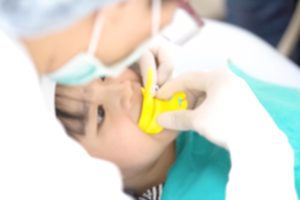 Sifting Fact From Belief
Sifting Fact From Belief
Dental researchers call it The Fluoride Story—the most dramatic turn-around of a population’s dental health in history. So far.
The Fluoride Story began as one of many smaller, ongoing stories. And we have research to thank.
In university laboratories in the US and Canada, in dental products labs, in national science centers—the research goes on. It seems far from an everyday visit to the dentist. There is an air of mystery to the research process itself. What motivates the people in white coats? What are they really up to?
Why all the fuss?
In practical terms, any science boils down to the difference between belief and fact. Long ago, we blamed “tooth worms”—tiny animals burrowing in teeth—for dental decay. Based on this belief, practitioners drove out tooth worms with fire. Needless to say voodoo rarely saved a tooth (the trial by fire likely scorched a few chin, too).
Today, because of research,we have fact. Bacteria cause decay. We treat the bacteria. We stop the decay.
Researchers hold fast to methods of inquiry and rules of the road to distinguish fact from belief. It is this tenacious philosophy, in the long run, that brings us cures and prevents disease.
It’s a long process, one step at a time. The original fluoride research arose from investigations into fluorosis—a discoloration of the teeth from too much fluoride. By establishing a relationship between tooth decay and fluoride, the healthiest level of the compound for our teeth was determined.
Today, we know that the optimal level of fluoride in drinking water is 0.7 ppm, so be sure to check that your local utilities provider that your water is being fluoridated, or if your family drinks primarily bottled or filtered water, consider a topical fluoride treatment from your dentist.
A Timeline of Fluoride’s Effect
If you ever hear someone questioning the effectiveness of fluoride, just remember this timeline of significant events.
- In 1940: To qualify for military service in World War II, US recruits need six opposing teeth in each jaw. Ten per cent fail this requirement. Tooth loss washes out more recruits than any other disability.
- In 1954: Dental researchers and public heath scientists begin the Grand Rapids fluoride study to evaluate the effects of fluoridated water on dental caries.
- By 1999: Half of all working adults in America, ages 18-64, have lost at most one tooth. Half of all school children in the US have never had a cavity.




Comments are closed.